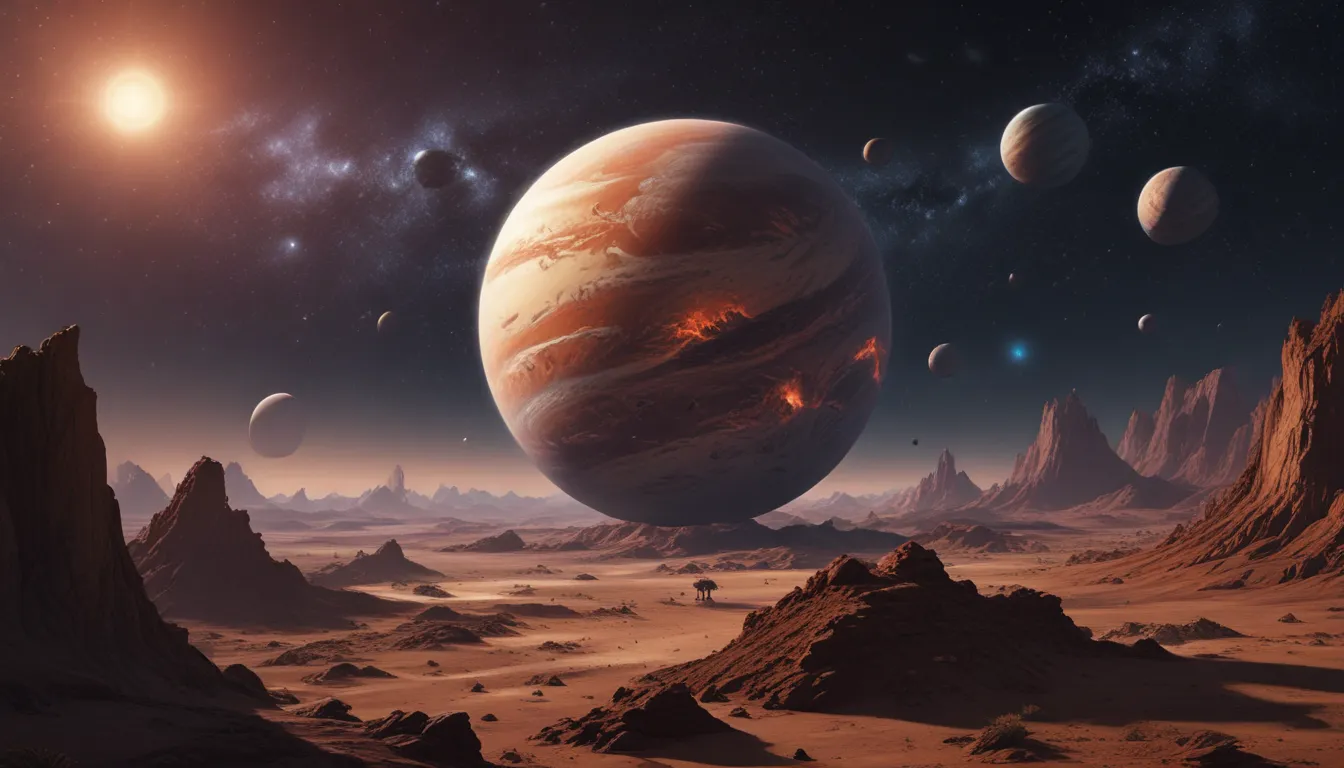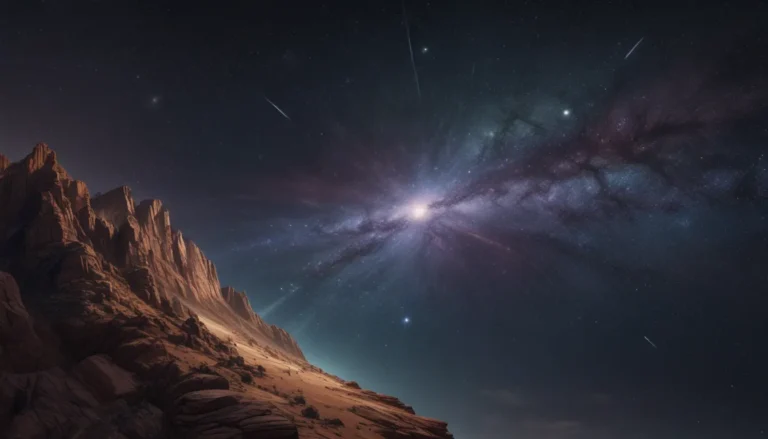The pictures we use in our articles might not show exactly what the words say. We choose these pictures to make you interested in reading more. The pictures work together with the words but don’t take their place. The words still tell you the important facts.
Have you ever gazed up at the night sky and wondered about the distant giants that orbit far beyond our solar gaze? The outer planets, known as gas giants and ice giants, are not just massive in size but also hold a treasure trove of mysteries that have fascinated astronomers and space enthusiasts for centuries. From the colossal storms of Jupiter to the intricate rings of Saturn, each outer planet tells a unique story about the formation and evolution of our solar system. Join us on a cosmic journey as we unveil 25 incredible facts about these awe-inspiring celestial bodies that are truly out of this world!
The Enigmatic Outer Planets
Outer planets, including Jupiter, Saturn, Uranus, and Neptune, reside in the outer reaches of our solar system, far beyond the rocky inner planets. These distant giants boast thick atmospheres filled with hydrogen, helium, and other gases, along with stunning features like rings and diverse moon systems. Let's delve into what makes each outer planet truly special:
- Jupiter: The largest planet in our solar system, Jupiter's mass is two and a half times that of all the other planets combined. It is home to the iconic Great Red Spot, a massive storm larger than Earth that has been raging for centuries.
- Saturn: Known for its mesmerizing rings made primarily of ice particles, Saturn is a striking beauty in our celestial neighborhood.
- Uranus: This unique planet rotates on its side, with its axis nearly parallel to the sun, setting it apart from its planetary siblings.
- Neptune: The farthest planet from the sun, Neptune boasts supersonic winds that reach staggering speeds of over 2,000 kilometers per hour, making it a true titan in the outer solar system.
Unveiling the Discoveries of Outer Planets
The discovery of the outer planets was a monumental milestone in our understanding of the solar system, expanding our knowledge of the vast celestial neighborhood beyond Earth's domain. Let's explore how these distant worlds were revealed to humanity:
- Uranus: Discovered in 1781 by William Herschel, Uranus was the first planet detected with a telescope, challenging the notion of only six known planets.
- Neptune: In 1846, Neptune's existence was mathematically predicted due to the irregular orbit of Uranus, showcasing a remarkable achievement in the annals of astronomy.
Uniqueness Defined: Outer Planets’ Special Features
Each outer planet boasts distinctive characteristics that set it apart from the rest of the cosmic ensemble, offering tantalizing glimpses into the diversity of our solar system's constituents:
- Jupiter: Home to the Great Red Spot, an enduring storm larger than Earth, Jupiter dazzles with its colossal size and turbulent atmosphere.
- Saturn: Titan, Saturn's largest moon, boasts liquid hydrocarbon lakes, making it one of the most Earth-like worlds we know.
- Uranus: With 27 named moons, all inspired by characters from literary works, Uranus enchants with its elegant ring system and enigmatic tilt.
- Neptune: Often dubbed Uranus's "twin," Neptune showcases a vibrant blue hue, courtesy of methane in its atmosphere, adding a dash of color to the outer solar system.
The Fascinating Moons of Outer Planets
The diverse moons encircling the outer planets offer a captivating tapestry of worlds, ranging from volcanic landscapes to frozen oceans. Let's take a closer look at some of the outer planets' captivating companions:
- Ganymede: Jupiter's largest moon, Ganymede, surpasses even the planet Mercury in size, making it a behemoth in the solar system's moon hierarchy.
- Titan: Saturn's moon Titan boasts a dense atmosphere, resembling Earth in many ways and holding the promise of scientific discovery.
- Miranda: One of Uranus's moons, Miranda exhibits extreme topography with canyons deeper than the Grand Canyon, showcasing the moon's dramatic landscape.
- Triton: Neptune's largest moon, Triton, orbits in a unique retrograde direction, hinting at a mysterious past in the distant Kuiper Belt.
Boldly Exploring the Outer Planets
Humanity's enduring quest to explore the wonders of the outer planets has led to groundbreaking space missions that have unveiled the secrets of our cosmic backyard:
- Pioneer 10: The first spacecraft to venture past Jupiter in 1973, Pioneer 10 provided humanity with the first close-up views of the gas giant.
- Voyager 2: This intrepid spacecraft remains the only craft to have visited Uranus and Neptune, capturing detailed images and data of these distant worlds.
- Cassini: A mission to Saturn, Cassini revealed the intricate structures of Saturn's rings and uncovered seas of liquid methane on Titan.
- Juno: Currently orbiting Jupiter, Juno is investigating the planet's composition and magnetic field, unraveling the mysteries of this massive gas giant.
Embarking on Future Missions to Outer Planets
The future of space exploration holds exciting prospects for unveiling even more secrets about the outer planets and their enigmatic moons:
- Uranus & Neptune Probes: Planned missions aim to study the ice giants Uranus and Neptune up close, offering insights into the early solar system's formation.
- Europa Clipper: A mission to Jupiter's moon Europa seeks to explore its subsurface ocean, possibly uncovering clues to extraterrestrial life.
- Dragonfly: This rotorcraft mission to Saturn's moon Titan will scrutinize its atmosphere and surface for signs of past or present life.
- Core Studies: Scientists aspire to send missions that can penetrate the gas giants' thick atmospheres to study their cores and overall structure.
The Significance of Investigating Outer Planets
Delving into the mysteries of the outer planets and their diverse moons provides vital clues about the origins and dynamics of our solar system, offering invaluable insights into planetary formation and evolution:
- Planetary Diversity: Exploring these distant giants aids scientists in understanding the myriad planetary systems in our galaxy, shedding light on the prevalence of gas giants in various orbits.
- Solar System Dynamics: The outer planets play a pivotal role in shaping the architecture of our solar system, influencing phenomena like the asteroid belt and the Kuiper belt's dynamics.
- Comparative Analysis: Studying the outer planets provides a unique perspective for understanding Earth's own atmosphere and magnetic field by drawing parallels and contrasts with those of the gas and ice giants.
A Celestial Farewell to Outer Planets
As we conclude our cosmic odyssey through the outer planets, let's revel in the breathtaking wonders and mysteries that beckon from beyond Earth's horizon. Each of these distant worlds offers a tale of cosmic proportions, from Jupiter's tempestuous storms to Neptune's ethereal blue hues. As we gaze up at the night sky, let's carry with us a sense of wonder and curiosity, ever eager to uncover more about the celestial marvels that adorn our solar system. Here's to future explorations that promise to unveil even more astonishing facts about the outer reaches of our wondrous universe!
Frequently Asked Questions
Q: What sets outer planets apart from inner ones?
A: Outer planets stand out due to their massive sizes, gaseous compositions, and intricate moon and ring systems, setting them apart from the rocky inner planets.
Q: How many outer planets exist in our solar system?
A: The outer planets club comprises four giants: Jupiter, Saturn, Uranus, and Neptune, each holding its own allure and secrets.
Q: Can humans live on any of the outer planets?
A: Given their extreme environments and lack of solid surfaces, living on the gas giants is infeasible. However, some of their moons may harbor conditions suitable for life as we know it.
Q: Which outer planet is the largest in the solar system?
A: Jupiter reigns as the largest planet in our solar system, dwarfing all other planets, including our Earth.
Q: Do all outer planets possess rings?
A: Yes, each outer planet boasts its own unique set of rings, varying in size and composition, with Saturn's being the most famous and visually striking.
Q: Which outer planet is farthest from the Sun?
A: Neptune holds the title of the solar system's most distant planet from the Sun, residing in the frigid outskirts of our celestial neighborhood.
Q: How were the outer planets discovered?
A: The discovery of the outer planets involved a blend of ancient observations, telescopic advancements, and mathematical predictions, marking significant milestones in astronomy's history.
In Conclusion
As we bask in the celestial wonders of the outer planets, let's remember that each distant world offers a window into the cosmic tapestry that surrounds us. From the colossal storms of Jupiter to the icy rings of Saturn, the outer planets beckon us to explore, learn, and appreciate the marvels of our vast universe. Let curiosity guide us as we embark on future explorations, unveiling more of the astonishing facts that lie beyond the confines of our home planet. The outer planets remind us of the boundless beauty and complexity of our solar system, inviting us to gaze up at the night sky with wonder and awe. Here's to the cosmic journey that awaits us, filled with endless revelations and discoveries in the realm of outer planets.






